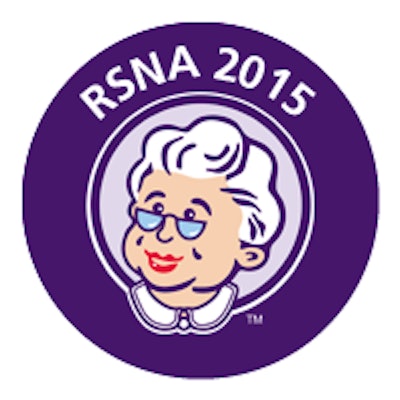
CHICAGO - It's not your imagination: Radiologists are working more for less reimbursement -- in fact, almost double for what they're getting paid, according to a poster discussion at RSNA's annual conference.
For years, healthcare costs have been outpacing economic growth, and measures such as the Deficit Reduction Act (DRA) in 2005 and the Patient Protection and Affordable Care Act (ACA) in 2010 have been taken to rectify the situation, said lead researcher Dr. Manisha Patel from Thomas Jefferson University.
These measures have dramatically affected radiology, as the combination of high utilization and high expenditures led to the targeting of radiologists' reimbursements. The DRA-capped technical component reimbursement for physician office imaging disproportionately affected radiologists who had made a considerable investment in imaging equipment, and the ACA mandate that the U.S. Centers for Medicare and Medicaid Services (CMS) find and adjust misvalued medical services resulted in new bundled codes.
The result? Radiologists are in a tight spot, Patel told AuntMinnie.com.
"There continue to be challenges to radiologists' reimbursements, while at the same time their workload continues to increase," she said.
Imaging imbalance
Patel and colleagues compared trends in payment to radiologists with their workload to investigate whether an imbalance has developed. The team reviewed CMS physician/supplier data from 2001 to 2013, selecting CPT codes for all noninvasive diagnostic imaging provided by radiologists, calculating relative value units (RVUs) for each CPT code per year, and determining total Medicare payments for these services.
"Given that radiology reimbursements have declined sharply in recent years -- while growth in utilization of imaging appears to have leveled off -- we wanted to compare payment trends for radiologists to their workload trends to determine if an imbalance has developed," Patel told AuntMinnie.com.
The RVU rate per 1,000 Medicare beneficiaries for all imaging services provided by radiologists during the study time frame grew from 1,548 in 2001 to a peak of 2,404 in 2009 -- an increase of 55%, the researchers reported. It dropped in 2010 to 2,243, and leveled off over the next three years, settling at 2,218 in 2013, or 8% less than the 2009 peak.
For the professional component of the RVUs, there was an increase of 43% between 2001 and 2013, Patel and colleagues found.
Total Medicare payment to radiologists increased from $3.4 billion in 2001 to a peak of $5.3 billion in 2006 (an increase of 55%), after which it dropped abruptly in 2007 to $4.6 billion. It then gradually decreased to $4.2 billion in 2013 (a 20% drop from the 2006 peak).
The data suggest that radiologists are working harder for less, according to Patel's group. From 2001 to 2013, the increase in radiologists' workload was nearly double their increase in reimbursement (43% versus 24%), with their workload growing much faster than reimbursements throughout the study period. Even though there was a downtrend in both RVUs and Medicare payments in the last few years of the study time frame, there was a considerably greater drop in reimbursement than in workload.
"There is a clear imbalance, as radiologists' workload grew considerably faster than their reimbursements throughout the entire study period, and they saw a considerably greater drop in reimbursement than in workload during the downturn after 2009," Patel said.
Adding value
So what can radiologists do in this unbalanced environment? Add value, according to Patel.
"A shift from a fee-for-service to a fee-for-value reimbursement model emphasizes the importance of adding value to the profession through work like joining hospital committees and building relationships with administrators, consulting with referring physicians, and supervising advanced imaging exams," she concluded.




















